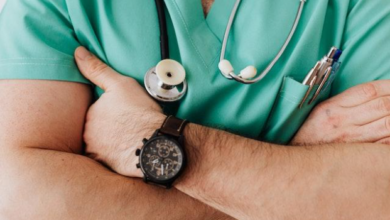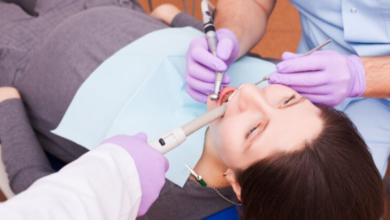Deployable Medical Units: Improving Access To Healthcare Anywhere

In an ever-changing world where natural disasters, conflicts, and remote living conditions create challenges for healthcare access, deployable medical units have emerged as a vital solution. These mobile facilities bring life-saving medical care to areas where permanent infrastructure is unavailable, ensuring that no one is left without the treatment they need. From field hospitals to hospital centers, these units are revolutionizing the way healthcare is delivered in challenging environments.
Continue reading to find out more.
What Are Deployable Medical Units?
Deployable medical units are portable medical treatment facilities designed for rapid setup in diverse locations. These units, such as the versatile army medical tent, are engineered to provide immediate healthcare services in remote or crisis-stricken areas. Whether responding to a natural disaster or supporting military operations, these units serve as vital lifelines.
Field hospitals, equipped with advanced medical equipment and staffed by skilled personnel, replicate many of the capabilities of traditional hospitals. They offer services ranging from emergency care to surgical procedures, ensuring comprehensive support for patients in need. In tandem with these units, hospital centers coordinate broader healthcare strategies, allowing seamless integration between field operations and permanent medical facilities.
Benefits of Deployable Medical Units
Deployable medical units have proven to be indispensable in emergencies and remote locations. Their benefits include:
- Rapid Deployment: These units can be quickly mobilized to respond to urgent situations, minimizing delays in treatment.
- Adaptability: With modular designs, they can be customized to meet the unique healthcare needs of any environment.
- Improved Access: From war zones to isolated rural areas, deployable units ensure healthcare reaches even the most challenging locations.
- Support for Permanent Facilities: These units alleviate strain during emergencies by supplementing the capabilities of traditional hospital centers.
In essence, deployable medical units are not just a temporary solution; they’re a transformative approach to ensuring that quality healthcare reaches every corner of the globe, no matter the challenges.
Types of Deployable Medical Units
Deployable medical units come in various types, each designed to address specific healthcare needs in diverse environments. Below are the primary types of deployable medical units:
- Field Hospitals
Field hospitals are big mobile setups designed to offer extensive healthcare services, from emergency treatment to surgeries and recovery care. They’re commonly used during disasters and military operations.
- Hospital Centers
These units act as hubs for coordinating medical operations in the field. They connect smaller deployable units with permanent healthcare facilities to streamline patient care and resource management.
- Mobile Clinics
Compact, vehicle-based units focused on delivering primary healthcare services. These are often used in rural or underserved areas to provide routine check-ups, vaccinations, and essential treatments.
- Surgical Teams and Operating Units
Specialized units are equipped with operating rooms and are staffed by surgical teams. They are designed for rapid deployment to provide life-saving surgical care in emergencies.
- Isolation and Quarantine Units
These units are tailored for managing infectious diseases, ensuring patients receive care while preventing the spread of illness to others.
- Trauma Care Units
These units, focused on providing advanced trauma care, are essential in responding to accidents, natural disasters, or combat-related injuries.
- Pharmaceutical Distribution Units
Designed to store, manage, and distribute medical supplies and medications in the field. They are critical for ensuring a steady supply of essential medicines.
- Diagnostic Units
Equipped with advanced imaging and laboratory testing capabilities, these units allow healthcare providers to diagnose conditions on-site, enabling faster treatment decisions.
- Rehabilitation Units
Focused on post-treatment recovery, these units provide physical therapy and support to patients recovering from injuries or surgeries.
Each type of deployable medical unit serves a unique purpose, ensuring that healthcare can be tailored to the specific needs of any situation or environment.
Future of Deployable Medical Units
Advances in technology are shaping the future of deployable medical units. Innovations such as telemedicine, autonomous logistics, and solar-powered systems promise to make these units even more efficient and sustainable. As global healthcare needs evolve, the role of deployable units in providing reliable access to medical care will only continue to grow.
The Role of Medical Logistics Support
One critical component of deployable medical units is medical logistics support. Ensuring the timely delivery of medical supplies, personnel, and equipment is essential for the effective functioning of these units. From securing medication to maintaining a sterile environment, logistical planning plays a key role in sustaining operations.
For example, medical logistics teams are responsible for transporting resources to field hospitals and medical treatment facilities. This seamless support system ensures that healthcare providers can focus on delivering exceptional care without delays or resource shortages.
Conclusion
Deployable medical units, including field hospitals and hospital centers, are transforming healthcare delivery by ensuring that care is accessible anytime, anywhere. Backed by robust medical logistics support and innovative designs, these units bridge the gap between need and care in the most critical situations. Their impact extends beyond immediate emergencies, fostering a world where healthcare knows no boundaries.




